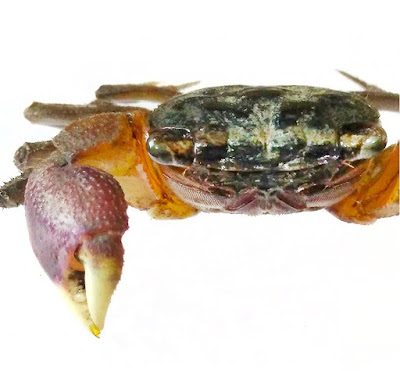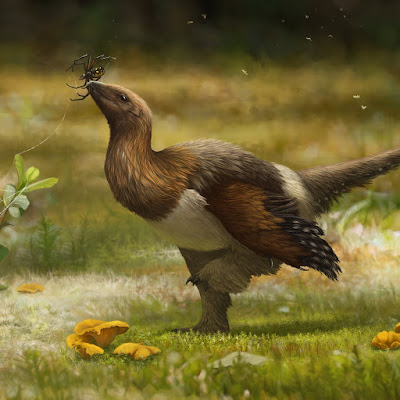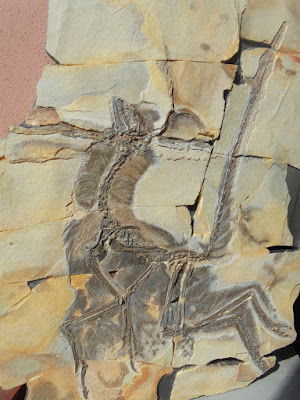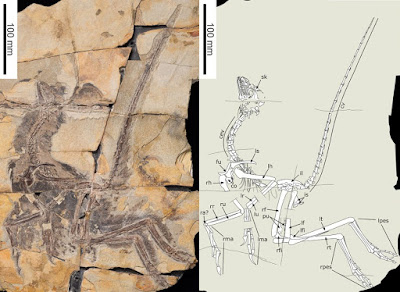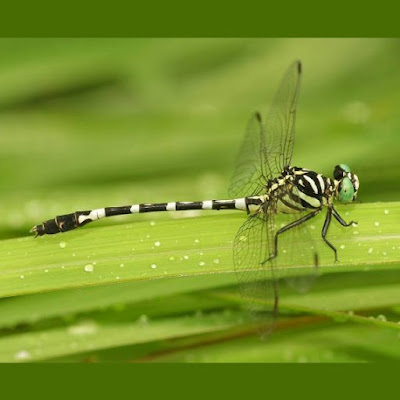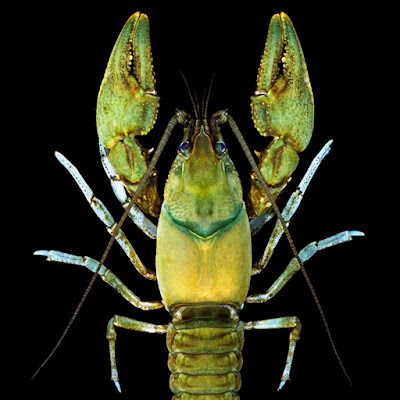[Most Recent Entries] [Calendar View]
Wednesday, August 23rd, 2017
| Time | Event | ||||||
| 9:41a | [Crustacea • 2017] Pseudosesarma glabrum • A New Species of Pseudosesarma Serène & Soh, 1970 (Brachyura: Sesarmidae) from Cochin in southwestern India
Abstract A new species of mangrove sesarmid crab of the genus Pseudosesarma Serène & Soh, 1970, is described from Cochin, southwest India. The species superficially resembles P. edwardsii (De Man, 1887), known from Myanmar and many parts of India; the proportions of the carapace and male pleon also ally it with P. crassimanum (De Man, 1887) from Myanmar, Sri Lanka and Southeast Asia. Pseudosesarma glabrum n. sp., however, is easily separated from P. edwardsii and P. crassimanum primarily by the almost glabrous dorsal surface of the carapace and the distinctive form of its male first gonopod. Keywords: Kerala, India, taxonomy, Sesarmidae, mangroves Peter K. L. Ng, Varghese Rani and S. Bijoy Nandan. 2017. A New Species of Pseudosesarma Serène & Soh, 1970 (Crustacea: Brachyura: Sesarmidae) from Cochin in southwestern India. Zootaxa. 4311(2); 263–270. DOI: 10.11646/zootaxa.4311.2.7 | ||||||
| 9:55a | [Paleontology • 2017] Serikornis sungei • A New Jurassic Theropod from China Documents A Transitional Step in the Macrostructure of Feathers
Abstract Genuine fossils with exquisitely preserved plumage from the Late Jurassic and Early Cretaceous of northeastern China have recently revealed that bird-like theropod dinosaurs had long pennaceous feathers along their hindlimbs and may have used their four wings to glide or fly. Thus, it has been postulated that early bird flight might initially have involved four wings (Xu et al. Nature 421:335–340, 2003; Hu et al. Nature 461:640–643, 2009; Han et al. Nat Commun 5:4382, 2014). Here, we describe Serikornis sungei gen. et sp. nov., a new feathered theropod from the Tiaojishan Fm (Late Jurassic) of Liaoning Province, China. Its skeletal morphology suggests a ground-dwelling ecology with no flying adaptations. Our phylogenetic analysis places Serikornis, together with other Late Jurassic paravians from China, as a basal paravians, outside the Eumaniraptora clade. The tail of Serikornis is covered proximally by filaments and distally by slender rectrices. Thin symmetrical remiges lacking barbules are attached along its forelimbs and elongate hindlimb feathers extend up to its toes, suggesting that hindlimb remiges evolved in ground-dwelling maniraptorans before being co-opted to an arboreal lifestyle or flight. Keywords: Paraves, Birds, Feathers, Barbules, Jurassic, Flight evolution
Systematic palaeontology Theropoda Marsh, 1881 Maniraptora Gauthier, 1986 Paraves Sereno, 1997; Avialae Gauthier, 1986 Serikornis sungei gen. et sp. nov. Etymology: Serikos, ancient Greek for silk, because the body is almost covered with plumulaceous-like feathers; Ornis, ancient Greek for bird; named in honour of Sun Ge, for his contribution to our knowledge of Jurassic and Cretaceous ecosystems in Asia. Holotype: PMOL-AB00200 is a single complete articulated skeleton with associated integumentary structures preserved on a slab. The counterpart is missing, but most of the skeleton is preserved on the main slab. Locality and horizon: PMOL-AB00200 was collected in the Tiaojishan Formation (Oxfordian, Upper Jurassic; Chu et al. 2016) from Daxishan village, Linglongta (Jianchang County, Liaoning Province, China). Diagnosis: Serikornis is characterized by the following combination of characters (autapomorphies are marked with an asterisk): four anterior maxillary teeth twice as long as the others regarding the crown height*; coracoid tuber well-developed and laterally projected from the lateral margin of the coracoid and forming a subglenoid shelf along the caudoventral margin of the bone; the distal end of the lateral process of the coracoid is thicker than the proximal part and forms a ventral rounded bump; ventrodistal process of ischium narrow, hook-like, strongly deflected caudodorsally and set at the distal end of the ischium*; smooth ventral side of coracoid devoid of small pits. ....
Ulysse Lefèvre, Andrea Cau, Aude Cincotta, Dongyu Hu, Anusuya Chinsamy, François Escuillié and Pascal Godefroit. 2017. A New Jurassic Theropod from China Documents A Transitional Step in the Macrostructure of Feathers. The Science of Nature. 104:74. DOI: 10.1007/s00114-017-1496-y | ||||||
| 1:40p | [Entomology • 2017] Anisogomphus yingsaki • A New Gomphid Species (Odonata: Gomphidae) from Thailand
Abstract Anisogomphus yingsaki sp. nov. (holotype male: Ban Na Kha, Ban Muang, Sakon Nakhon province, Thailand, altitude 170–175 m, 22-vi-2016) is described and illustrated. The new species is most similar to A. bivittatus from India and Nepal, and also A. flavifacies, and A. resortus from China in the shape of anal appendages. However, it can be separated from all of these by a combination of the following characters: shape of antehumeral stripes, abdominal pattern, shape of vesica spermalis and female valvula vulvae. The behavior of the new species, including crepuscular activity, is briefly discussed. Keywords: Odonata, dragonfly, Odonata, Anisoptera, Gomphidae, Anisogomphus, new species, Thailand Noppadon Makbun. 2017. Anisogomphus yingsaki (Odonata: Gomphidae) sp. nov., A New Gomphid Species from Thailand. Zootaxa. 4306(3); 437–443. DOI: 10.11646/zootaxa.4306.3.10 | ||||||
| 2:55p | [Crustacea • 2017] A Case of Appalachian Endemism: Revision of the Cambarus robustus complex (Decapoda: Cambaridae) in the Kentucky and Licking River Basins of Kentucky, USA, with the Description of Three New Species
Abstract The amazing levels of freshwater biodiversity found in the Appalachian Mountains of the eastern United States are among the highest recorded globally. Localized endemics make up much of this diversity, with numerous fish, freshwater mussels, salamanders and crayfish often being restricted to a single watershed, and in some instances, subwatersheds. Much of this diversity is the product of the processes of vicariance and historical stream drainage patterns. Herein, we describe three new crayfish species, all previously members of the Cambarus robustus complex, which occur in the Appalachian portion of the Kentucky and Licking river basins in Kentucky, USA. All three species differ from each other morphologically, genetically, and zoogeographically, fulfilling the requirements of the integrated species concept. Cambarus guenteri occurs in the southern tributaries of the Kentucky River mainstem as well as throughout the South Fork Kentucky River. Cambarus taylori is a narrow endemic, which only occurs in the Middle Fork Kentucky River. Cambarus hazardi, which has the widest distribution of the three new species, occurs in the North Fork Kentucky River, Red River, and upper reaches of the Licking River basin. Stream piracy events between the Cumberland and South Fork Kentucky River, as well as the Licking, Red and North Fork Kentucky rivers, are theorized to be important in the evolution of this complex. Cambarus guenteri is proposed as currently stable, though both C. taylori and C. hazardi are considered imperiled at this time due to habitat destruction throughout both of their respective ranges. Keywords: Cambarus, endemicity, Kentucky, new species, systematics, taxonomy, Crustacea Cambarus (Puncticambarus) guenteri, new species Etymology. It is with great pleasure that we name this species in honor of Dr. Guenter A. Schuster, Professor Emeritus, Eastern Kentucky University. Dr. Schuster dedicated his professional career to teaching undergraduates, graduate students and professional biologists about the diversity, biology, and conservation of freshwater invertebrates, with a particular influence on biologists from the bluegrass state, and he is a coauthor of the definitive work on the crayfishes of Kentucky. He instilled in those he educated a sense of wonder and appreciation for these organisms, which has undoubtedly led to the conservation of more than one freshwater mussel or crayfish. The common name for C. guenteri is the Redbird Crayfish in reference to the Redbird River drainage where large populations of C. guenteri occur. Common name. Redbird Crayfish. Cambarus (Puncticambarus) hazardi, new species Etymology. Cambarus hazardi is named after Commodore Oliver Hazard Perry, noted American Naval Commander, and the name sake of Perry County Kentucky and the County Seat, Hazard Kentucky. The common name Brawny Crayfish is in reference to the powerfully built stature of C. hazardi. Common name. Brawny Crayfish Cambarus (Puncticambarus) taylori, new species Etymology. It is our honor and privilege to name this crayfish after Dr. Christopher A. Taylor from the Illinois Natural History Survey. Dr. Taylor has been one of the most active crayfish researchers in the United States for the past two decades and a leader in crayfish conservation, co-authored the seminal work on Kentucky’s crayfishes, Crayfishes of Kentucky, and has been instrumental in bringing the conservation concerns of North America’s crayfishes to light with his many publications. The common name Cutshin Crayfish is in reference to Cutshin Creek watershed, which harbors the species. Common name. Cutshin Crayfish Zachary J. Loughman, Sujan M. Henkanaththegedara, James W. Fetzner, Jr. and Roger F. Thoma. 2017. A Case of Appalachian Endemism: Revision of the Cambarus robustus complex (Decapoda: Cambaridae) in the Kentucky and Licking River Basins of Kentucky, USA, with the Description of Three New Species. Zootaxa. 4269(4); 460-494. DOI: 10.11646/zootaxa.4269.4.4 Carnegie researcher discovers three more species of Appalachian crayfish post-gazette.com/news/science/2017/08/05/C |
| << Previous Day |
2017/08/23 [Calendar] |
Next Day >> |
